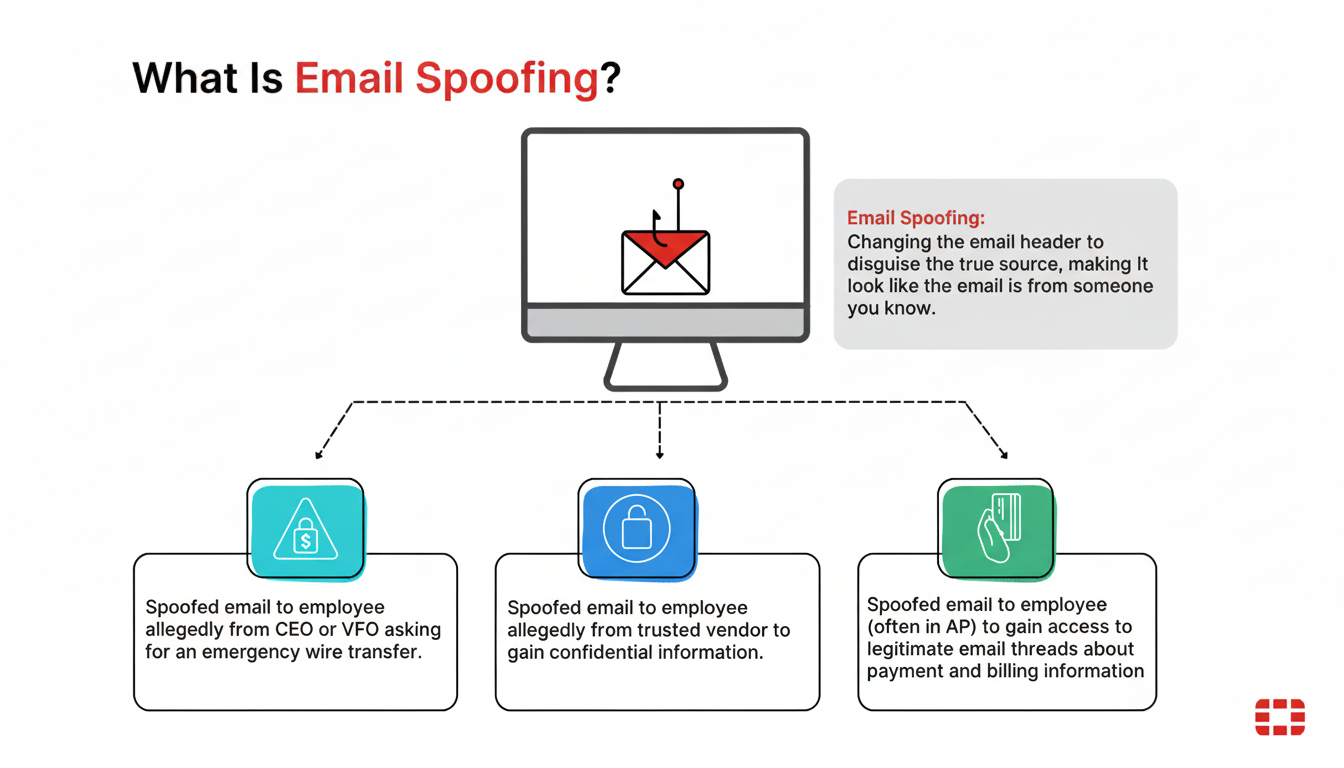Phishing emails are mutating, but so are the defenses. From machine learning filters to domain authentication protocols, a generation of programs is quietly stopping bogus emails before they ever reach your inbox. The move comes at a time when the FBI’s Internet Crime Complaint Center is warning about record losses from cybercrime, with phishing attacks the most widely reported category, and Google says that Gmail readily blocks well over 99.9 percent of the malicious emails aimed at its users and rejects hundreds of millions of additional ones each day as spam.
How Email Authentication Combats Spoofing
The vast majority of fake emails depend on impersonation. Modern email systems combat that by verifying cryptographic and DNS-based fingerprints to confirm who truly sent a message. There are three basic keystones: SPF, DKIM, and DMARC.

SPF checks if the domain owner allows this IP to send emails. DKIM adds a tamper-evident signature that allows recipients to check that the message wasn’t modified in transit and is consistent with the domain it comes from. DMARC binds these signals together and implements a policy — none, quarantine, or reject — that instructs providers what to do if an email has not passed authentication or is not aligned with the visible “From” domain.
Enforcement is where the actual blocking occurs. Organizations publish DMARC policies in DNS and use aggregate and forensic reports to tune legitimate senders before moving to “quarantine” or “reject.” Gmail and Yahoo have “hardened the environment” by mandating bulk senders authenticate and maintain low spam rates, driving more brands to DMARC enforcement, preferably p=reject. The upshot: direct domain spoofing is blocked at the front door.
Forwarding can break SPF, which is why there are technologies like ARC designed to help maintain authentication through mailing lists and gateways. Parallel controls — MTA-STS and TLS reporting — ensure that email is delivered encrypted and allow for visibility if something’s configured wrong, while BIMI adds verifiable brand logos now that DMARC enforcement is possible, giving users a visual trust cue that criminals can’t easily duplicate.
Machine Learning Is Now Hunting Phishing Lures
Authentication isn’t foolproof — particularly with lookalike domains and cleverly written lures. That’s where machine learning comes in: Email security engines examine language, layout, sender behavior, and message metadata to identify “anomalies.” Models evaluate signals including urgent tone, payment requests, vendor impersonation patterns, and mismatched reply-to domains to score risk in real time.
Top providers train these systems on enormous datasets, teaching them to identify new tactics, everything from “consent” phishing that abuses OAuth prompts to quishing attacks that bury malicious URLs inside QR codes. Many tools also utilize computer vision to identify fake login pages or brand abuse by comparing visual elements against a library of known templates.
It works at scale. The big mail hosting providers report that they automatically block something like 90%+ of all spam and phish. Independent reports like Verizon’s Data Breach Investigations Report have likewise emphasized the human factor in successful attacks for years, which is why models like this now favor risky asks — like buying gift cards or initiating wire transfers — ahead of simply awkward wording.

Real-Time Attachment And Link Defense Against Phishing
Links and attachments are the payloads that translate a ruse into an intrusion. Modern gateways and cloud email security solutions rewrite URLs to pass clicks through time-of-click inspection. If there is a change of heart on the part of any link after it has been sent — as often happens — users are still safe. Malicious emails are a main entry point. Suspicious attachments run in user-driven sandboxes to reveal machine-like behaviors such as exploit chains, process injection, and data exfiltration.
These layers integrate with endpoint detection and response tools to rapidly isolate compromised hosts, and identity platforms to invalidate tokens after an account is phished. Some offerings watch post-delivery mailboxes through APIs, reaching back to grab messages after new tells have popped — really important when attackers switch tactics in the middle of a campaign.
Policy Changes Tighten the Net for Email Security
A less loud but still significant story is policy. CISA is encouraging federal and critical infrastructure organizations to implement DMARC at enforcement while also patching exposed email services. NIST guidance is eschewing single-point-of-failure security architecture by advocating defense in depth, multifactor authentication, and least privilege to reduce the effect of compromised accounts. Senders, meanwhile, are leveling up their operations — wanting high authentication rates and low spam rates, and one-click unsubscribe.
On the enterprise side, security teams are grouping around secure email gateways and API-first cloud email security, many times running both. The dual approach catches pre-delivery threats at the perimeter and post-delivery threats inside user mailboxes to better detect account takeover and insider spoofing.
Real World Results, And What The Filters Miss
The results are measurable. While the amount of money lost to email-based fraud has never been higher (according to data from the FBI), mail providers report rejecting upwards of 90% of malicious traffic automatically. In reality, organizations that use DMARC at enforcement, pair it with state-of-the-art filtering and user training, achieve massive reduction in successful phishing. High-value targets such as finance departments, HR, and IT help desks enjoy advanced controls, including supplier impersonation detection and payment protection workflows.
What still slips past? Very personalized BEC via email that uses hacked accounts, real file-sharing links, or existing vendor threads. That’s why behavioral analytics, anomaly detection on payments, and verification rituals off email are all necessary backstops.
What to Do Right Now to Strengthen Email Security
Steps for companies
- Publish SPF, DKIM, and DMARC, and move to enforcement.
- Enable MTA-STS and TLS reporting.
- Implement URL rewriting and attachment sandboxing.
- Integrate email security with identity and endpoint solutions.
- Use API-based, mailbox-level threat intelligence for post-delivery protection.
Tips for individuals
- Trust alerts from your provider.
- Verify unexpected requests through a second channel.
- Use multifactor authentication so that a stolen password doesn’t lead to tears.
Email may never be fail-safe, but the software is getting much better at recognizing the telltale signs of a fake. With authentication, smart filtering, and real-time link and file inspection piling up together on the far end of perception, we’re finally seeing the odds tilt back toward the inbox defender.

